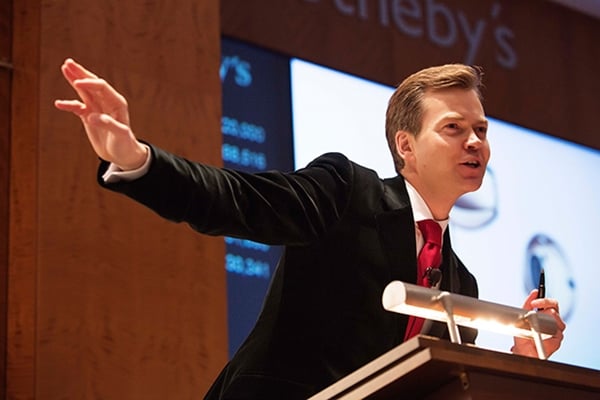
Sotheby’s auction house is betting big on the latest global art market boom with financial filings showing the house is increasing its borrowing from corporate lenders in order to extend more guarantees to potential consigners. According to an 8-K filing made with the SEC on August 25, Sotheby’s is upping the commitments from lender GE Capital to $850 million from $600 million.
Among the goals listed for the increased borrowing are raising “the maximum permissible amount of net outstanding auction guarantees (.i.e auction guarantees less the impact of related risk and reward sharing arrangements) from $300 million to $600 million.” In addition to optimism that robust global art market growth will continue in the near term, the heightened risk position is also a reflection of the revised management structure under Sotheby’s newest board member, hedge fund manager Dan Loeb, who won three seats on the Sotheby’s board after a bruising proxy battle.
Auction guarantees, in which the house promises to pay a consignor a minimum amount regardless of how a work performs at auction, are widely seen as a barometer of the outlook for the auction business. Amid the intense competition between rivals Sotheby’s and Christie’s, they can further serve as effective business-getting tools or be the deciding factor in which house a seller ultimately decides to go with. As was seen in the previous peak and crash cycle in 2008 and 2009, they can also be risky, with Sotheby’s having sustained considerable losses in late 2008 according to is quarterly financial reports at the time. According to a late 2008 financial report, the house indicated it would “substantially reduce its use of auction guarantees until stability is restored in the global financial and economic markets.”
Christie’s, which is privately held and thus not required to issue detailed quarterly and annual financial statements, also reportedly sustained considerable losses at the time because of its guarantee-related exposure.